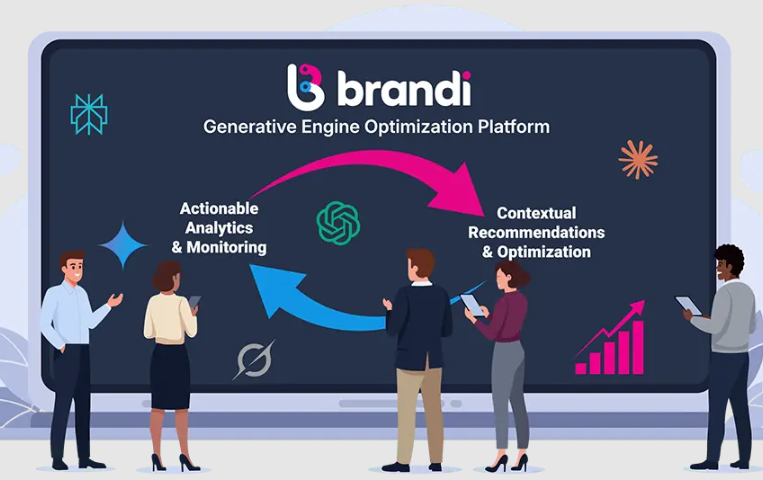As traditional search engines face competition from artificial intelligence chatbots, brands must adapt to a new digital landscape. Today, Brandi AI LLC unveiled its innovative platform focused on what it terms “generative engine optimization” (GEO), aimed at enhancing digital visibility in this evolving market. The company asserts that businesses need to shift their focus from conventional search engine optimization (SEO) to this new approach to stay relevant.
The rise of generative AI is reshaping how consumers and businesses gather information. According to a recent survey by Adobe Inc., over half of U.S. consumers now rely on AI chatbots to research products. In the business-to-business (B2B) sector, the trend is even more pronounced, with Forrester Inc. reporting that 89% of B2B buyers depend on chatbots as a primary source of information throughout their purchasing journey. This reliance on AI chatbots streamlines decision-making, providing users with quick, consolidated answers.
Leah Nurik, co-founder and Chief Executive of Brandi AI, emphasized the implications of this shift. “Buyers ask a single question… if your brand isn’t in the answer, it doesn’t exist,” she stated. Many brands remain unaware of their presence in AI-generated results, which poses a significant challenge for marketing strategies in the current environment.
Introducing Generative Engine Optimization
Brandi AI’s GEO framework is designed to address the limitations of traditional SEO by focusing on the signals used by AI systems to generate answers. Nurik explained that these signals encompass user intent, site authority, clarity, and trustworthiness. By aligning with these evaluation methods, brands can enhance their visibility in AI chatbot responses.
The GEO platform offers three key features. The first is a competitive intelligence engine that allows marketers to assess their website’s visibility to AI chatbots. This tool also enables them to evaluate their competitors, helping brands identify areas for improvement. The second feature is an “actionable GEO framework,” which provides a structured system for analyzing the prompts that surface brand content. It includes recommendations for optimizing article headlines and enhancing readability for AI systems.
The final component focuses on aligning existing marketing assets with what potential buyers seek when they engage with AI chatbots. By adapting rather than overhauling their content, brands can increase their chances of being cited in AI responses.
Nurik noted that companies utilizing Brandi AI will not have to abandon their current SEO and public relations workflows. The platform is designed to integrate seamlessly with existing strategies, expanding content approaches to accommodate both AI and traditional search engines.
Rethinking Digital Marketing Strategies
The shift towards generative AI represents a fundamental change in how visibility is defined. “The hard truth is that visibility isn’t about rankings anymore, and if AI doesn’t surface your brand, your buyers won’t either,” Nurik stated. Brandi AI aims to bridge the gap between brand visibility and AI-generated results, ensuring companies do not fall behind their competitors.
As brands navigate this new terrain, the implementation of generative engine optimization may become essential for maintaining a competitive edge in the digital marketplace. By adopting GEO practices, businesses can better position themselves to meet the demands of a rapidly evolving consumer landscape.
